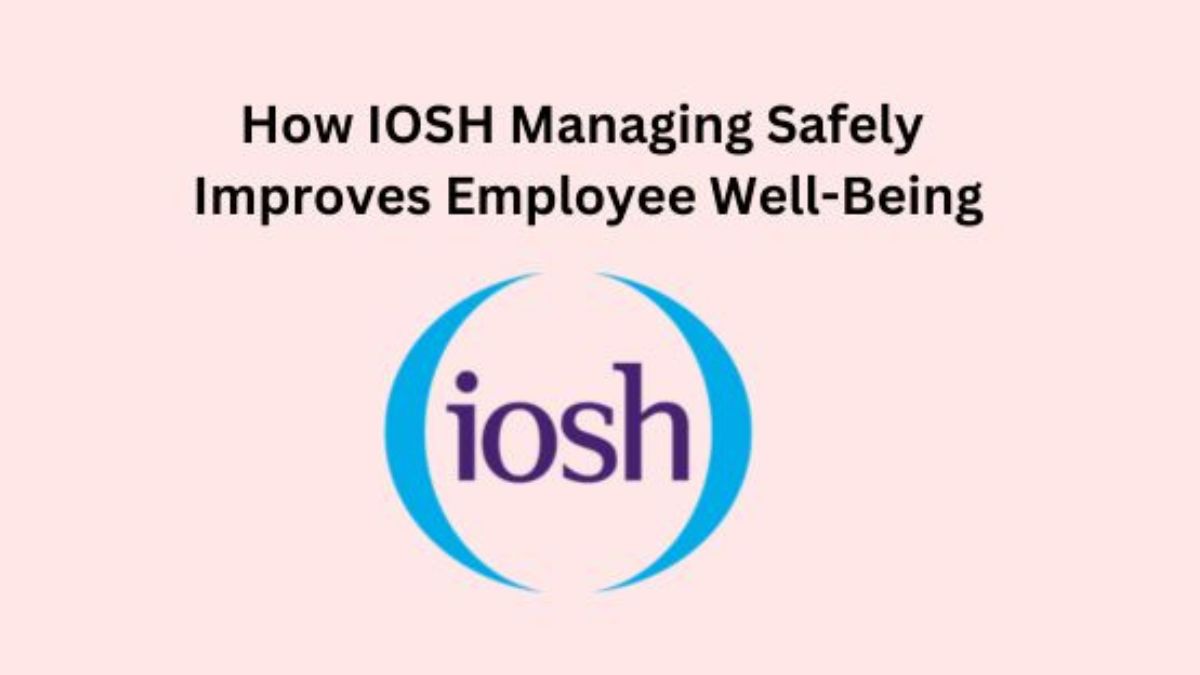How IOSH Managing Safely Improves Employee Well-Being

Have you ever wondered how a IOSH Course can improve compliance and your team’s general wellness? Emphasising the distinct Benefits of IOSH Managing Safely on employee morale and health, the course is designed to transform the way safety is perceived in workplaces.
It’s about creating an environment where every team member excels while staying safe. Come explore with us how this training programme can revolutionise safety in your company.
Table of Contents
- Understanding IOSH Managing Safely
- Creating a Safe Work Environment
- Enhancing Risk Awareness and Management
- Enhanced Collaboration and Communication
- Higher Morale and Job Satisfaction
- Reduced Stress and Anxiety
- Supports Continuous Improvement
- Compliance with Legal Requirements
- Conclusion
Understanding IOSH Managing Safely
The target audience for the widely recognised Managing Safely training includes managers and supervisors in various industries. This course covers the following basic principles of health and safety management:
- Risk Assessment and Control
- Responsibility
- Understanding
- Incident Investigation
- Performance Assessment.
By the end of it, participants in the course should be completely committed to managing health and safety in their companies.
Creating a Safe Work Environment
One of IOSH Managing Safely main advantages is its emphasis on establishing a safe work environment. Managers who undergo this training will acquire skills in risk assessment, hazard identification, and application of appropriate controls. Occupational accidents and injuries can be greatly lowered with a proactive approach to health and safety. This fosters a culture of safety in which workers not only get protection but also feel respected and cared for.
Enhancing Risk Awareness and Management
Good risk management is essential to the welfare of employees. Managers who have completed the IOSH Managing Safely course are trained to identify risks and act before they cause harm. Managers can stop illnesses and accidents by knowing how to implement control measures and conducting comprehensive risk assessments. The increased awareness and proactive risk management ensures that the workplace is safer. Employees will also feel less stressed and anxious as they know their safety is the main concern.
Enhanced Collaboration and Communication
A secure workplace requires effective communication. According to IOSH Managing Safely, an open and transparent communication channel is crucial for health and safety issues. Supervisors receive training on effectively conveying safety regulations, guidelines, and standards to their groups. This promotes a transparent and cooperative culture and guarantees that workers know their responsibilities for upholding a safe workplace. Workplace cohesion and support are enhanced when staff members feel free to voice concerns and recommendations regarding safety.
Higher Morale and Job Satisfaction
An employee’s well-being is closely associated with their morale and job satisfaction. When they feel that their organisation is committed to their safety and has robust safety procedures, their mindset bound to improve. Their sense of respect and worth is reflected in their increased job happiness. By enabling managers to actively safeguard their teams and demonstrate sincere concern for their welfare IOSH Managing Safely contributes to developing this good atmosphere.
Reduced Stress and Anxiety
Anxiety and stress can compromise employee productivity and output. One of the main causes of stress is the anxiety associated with getting sick or injured at the workplace. Managers may establish a more secure and consistent work environment by implementing the lessons learned in IOSH Managing Safely. Employee stress levels drop, and they are better able to concentrate on their work which improves their mental health and productivity when they have faith that their workplace is secure and that possible dangers are appropriately controlled.
Supports Continuous Improvement
Continuous improvement in health and safety practices is ingrained in the IOSH Managing Safely course. Managers know how to monitor safety performance, evaluate it, and adjust in response to assessments. By adjusting to new difficulties and changes in the workplace, this continuous improvement strategy ensures that health and safety standards continue to be applicable and effective. Workers gain from an adaptable and dynamic safety culture that continuously aims to improve their well-being.
Compliance with Legal Requirements
Following health and safety rules is not only required by law but also essential for employees’ well-being. Through the IOSH Managing Safely course, managers will better understand their legal obligations and how to meet them. Following legal criteria helps companies protect their employees from injury and avoid legal consequences compromising organisational sustainability or employment stability. Employees operating in legally permissible environments feel more security and confidence.
Conclusion
IOSH Managing Safely uses a safer work environment, enhanced risk management, better communication, stress reduction, encouragement of ongoing development, and legal compliance confidence to ultimately contribute significantly to increasing employee well-being. Organisations may create a culture of safety and well-being that helps employees and the business overall by equipping managers with the tools and information to adequately manage health and safety concerns. Investing in IOSH Managing Safely is a dedication to the general welfare, workforce success, and safety.
For more information visit The Knowledge Academy.




